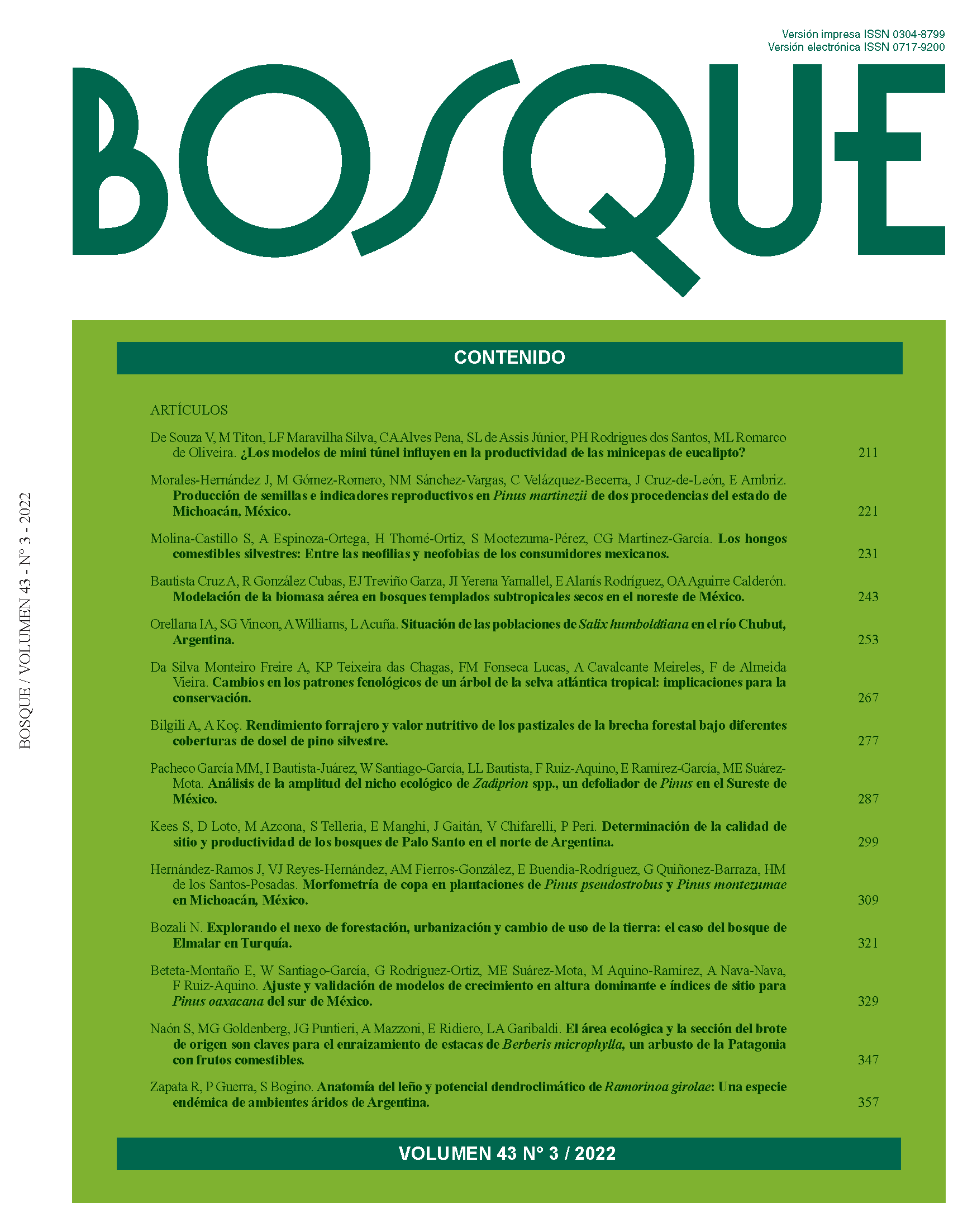Main Article Content
Jan 4, 2023
Abstract
Rangeland areas have great value as a quality source of roughage for livestock. As these areas lose their productivity, grazable areas within the forest will become alternative sources of forage for livestock. Therefore, determining the quality and quantity of forest gap understory vegetation at different tree frequencies is very important for efficient management of livestock and sustainable natural resources. This study was carried out in Scotch pine (Pinus sylvestris L.) forests to determine the forage quality of forest gap understories. The study area was separated into three different sites (open site, sparse site and dense site) based on tree canopy coverage. Among the examined plots, it was determined that dry matter yields were 823 – 1, 486 kg ha-1, Crude Protein (CP) 9.59 - 12.87 %; Neutral Detergent Fiber (NDF) 53.27 - 58.49 %; Acid Detergent Fiber (ADF) 32.40 - 37.33 % and Relative Feed Value (RFV) ranged between 95.32 - 112.32. The highest CP, NDF, and ADF contents and the lowest dry matter yield were found in the densely tree-covered area. While dry matter yield decreased, the contents of CP, ADF and NDF increased with increasing tree canopy density. In conclusion, the forest gaps (open and sparse tree canopy) can be used for grazing under sustainable grazing management practices to alleviate forage shortages in the region and provide extra income for rural people. This practice can contribute to sustainable rural development of understory grazing in the forest and forest edge settlements.
Downloads

This work is licensed under a Creative Commons Attribution-NonCommercial 4.0 International License.


